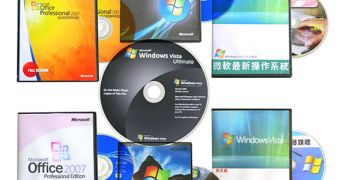Anti-piracy measures, implemented into Windows Vista and the Office 2007 System, got Microsoft sued. The activation process, along with the infrastructure behind it in the company's servers, is a measure designed to impact the piracy phenomenon, by ensuring that the end user license agreement terms are respected and that the ratio is always one copy of Vista to one machine. "Activation helps verify that your copy of Windows is genuine and that it has not been used on more computers than the Microsoft Software License Terms allow. In this way, activation helps prevent software counterfeiting. With an activated copy of Windows, you'll be able to use every Windows feature," revealed Microsoft.
And while activation is nothing new to Windows Vista or to the Office 2007 System, for that matter, it is this aspect of Microsoft's flagship products that brought with it a copyright infringement lawsuit. The Redmond lost the lawsuit initiated by z4 Technologies and David S. Colvin, the inventor of "Method for Securing Software to Decrease Software Piracy" and "Method and Apparatus for Securing Software to Reduce Unauthorized Use" (the names of the two patents authored by Colvin). Consequently, Microsoft has to pay some $140 million, according to the latest verdict that rejected the company's appeal in the matter. And as the initial trial was not enough, z4 Technologies brought another lawsuit against the company, for not altering the activation process of Vista and Office 2007 to a degree that would make it no longer infringing.
"The patents disclose a multi-step user authorization scheme whereby an initial password or authorization code grants the user a 'grace period' for a fixed number of uses or period of time. Users must then submit registration information to a representative of the software developer to receive a second password or authorization code, which is required to enable the product for use beyond this grace period. In the patented system, users are able to choose between a manual registration mode and an automatic or electronic registration mode. Upon receipt of the registration information, the software representative compares the submitted information to previously-stored registration information, and determines whether the user is authorized. If the user is not authorized, the software representative may disable the software," reads the summary for the appeals court's ruling, according to SeattlePI.

 14 DAY TRIAL //
14 DAY TRIAL //